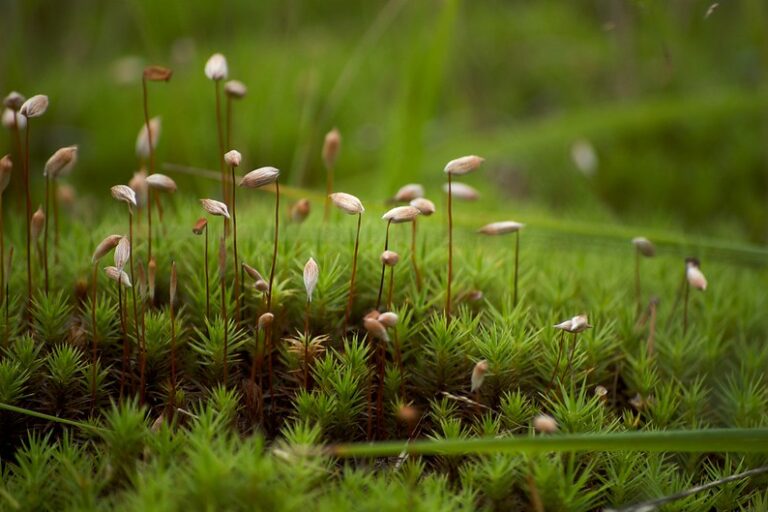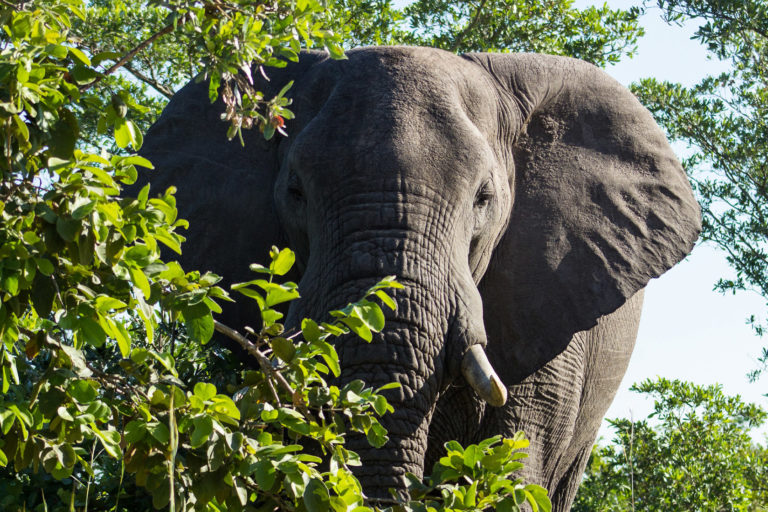A machine learning model of ammonia emissions from the world’s rice, wheat and corn crops shows that optimal fertilizer management could slash ammonia air pollution from these crops by 38%.
On a hotter and hungrier planet, breadfruit is becoming a popular tree. It offers nutrient- and fiber-dense fruits that can feed a family and provide farming income, and with its…
As the Biden administration pauses to ponder licenses for 12 new LNG export facilities, it is investing billions in natural gas infrastructure abroad. Critics warn U.S. gas expansion poses a direct threat to Earth’s ecosystems and people.
It’s been two years since Russia invaded Ukraine and since the Arctic scientific community was cut off from its Russian colleagues. But permafrost melt is quickening and renewed data flow is needed to track Russian carbon emissions.
As the world grapples with escalating climate change, policymakers remain laser-focused on CO2, with humanity striving to decarbonize energy systems, capture carbon, issue carbon credits, and plant millions of trees…
Producing the best wine grapes is an art: vintners need to meticulously manage soil and water conditions, deal with pests, and curate pollinators. Monitoring their vines year-round, growers carefully adjust…
As oil and gas production surge, shifting the global economy to a circular model is essential to charting a path away from fossil fuels, petroleum-based nitrogen fertilizers and petrochemicals such as plastics. Part 3 of a three-part miniseries.
This story is the second in a three-part mini-series surveying the range of impacts by the fossil fuel industry on the global environment. Part one and part two review harm…
Fossil fuels have done great good for humanity, but they are now not only threatening our planet’s climate, but also taking a terrible toll on the global environment, putting at risk Earth systems vital to life as we know it. Part 1 of a three-part miniseries.
Meet the rural farmers in southeastern Spain fighting the encroaching Sahara Desert through regenerative agriculture and landscape restoration.
Justin Stewart left for Mount Chimborazo in August 2022 to collect fungal samples from the Ecuadoran volcano at an elevation of 4,000 meters, or about 13,000 feet. Given that vegetation…
SINGAPORE — For a while now, researchers and policy experts have touted the transition to a circular economy as a way to sustainably handle the world’s growing waste and pollution…
The world’s linear economy, critically labeled as “take-make-waste,” is blamed for many global environmental problems, including climate change. The circular economy — focused on conserving resources and material reuse — is a proposed alternative.
Agribusiness magnate from the USA, who is already the biggest producer of corn-based ethanol in Brazil, plans to leverage “green” investments from governments and banks to meet negative carbon emissions using an unproven method.
For Jake Robinson, Greno Woods was an easy choice. This large, old forest in South Yorkshire county in the U.K. has historically undergone timber harvesting, quarrying and fires. Plantations of…
More carbon is stored in the soil than in all plants, animals and the atmosphere combined, making it among the most critical conservation frontiers as we face the climate crisis.…
Beneath the luxurious foliage and the majestic trees of the Amazon Rainforest lies a counterintuitive reality: a mostly infertile soil that becomes swiftly depleted once its plant coverage is stripped…
Plants and fungi struck a deal way back when. More than 400 million years ago, plants began trading sugar made from sunlight (a.k.a. carbon) for some of the soil nutrients…
Urban green spaces — parks, gardens and other green areas where people can go to enjoy some fresh air — are more than just pretty places to relax. New research…
Researchers analyzed never-before-used satellite data to calculate how much carbon is stored in protected areas worldwide.
It's easy to miss the mosses, the ubiquitous green, silver and brown carpets that drape across nature's surfaces, from forest to fen. It’s also easy to underestimate just how big…
This interview was produced with the funding support of the Pulitzer Center. WESTERN TURKANA, Kenya—Driving across Northern Kenya’s Turkana County, the seemingly boundless terrain of sand dunes, dusty brushes and…
Warmer temperatures could significantly diminish the ability of tropical forests to siphon carbon from the atmosphere by intensifying dry seasons, according to a recent study. The tropics pack away an…
TEHUACÁN-CUICATLÁN BIOSPHERE RESERVE, Mexico — The palenques, or local mezcal production sites, in the village of Santa María Ixcatlán stand unusually empty before the local Day of the Dead celebrations.…
Temperate peatlands sequester tremendous amounts of carbon, but many have experienced extensive harm. Now, as climate change worsens, land managers are urgently moving to restore these vital ecosystems.
Previous studies have shown that Africa’s tropical forests store more carbon per hectare than Amazonian forests. But how they do so is still a puzzle. It turns out that elephants…
Flying this November into a remote region of the Orinoquía savanna in Vichada, Colombia, environmental biologist Jacobo Arango could spot the Hacienda San José cattle ranch that his team was…
An area of salt marsh twice the size of Singapore has disappeared since the turn of the century, NASA scientists determined by analyzing satellite images from around the globe. Severe…
In contrast to their reputation, big plant eaters such as elephants that disturb forest and grassland vegetation could help curb climate change.
On Dec. 6, legislators in Argentina’s southernmost province of Tierra del Fuego approved a law to permanently protect the land and sea of the Mitre Peninsula at the tip of…


































































